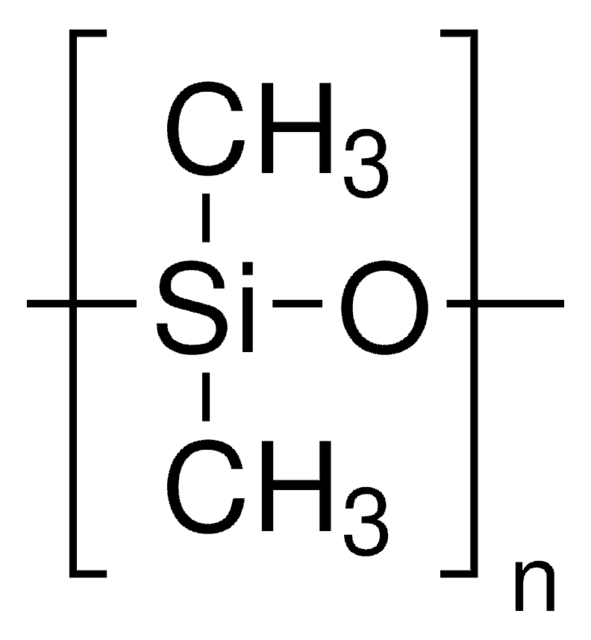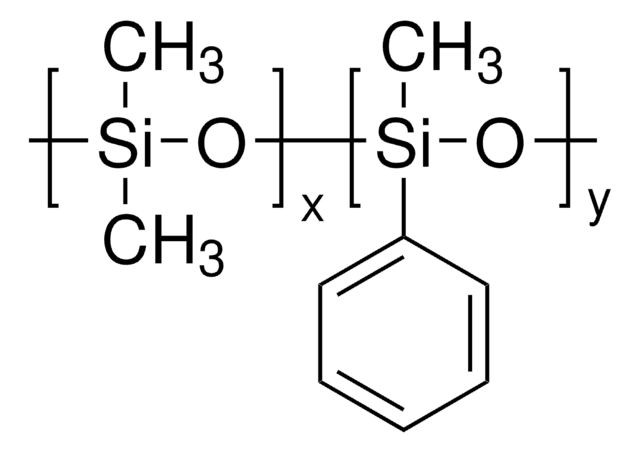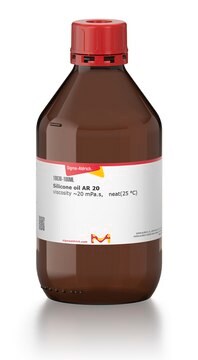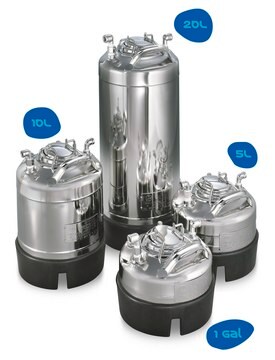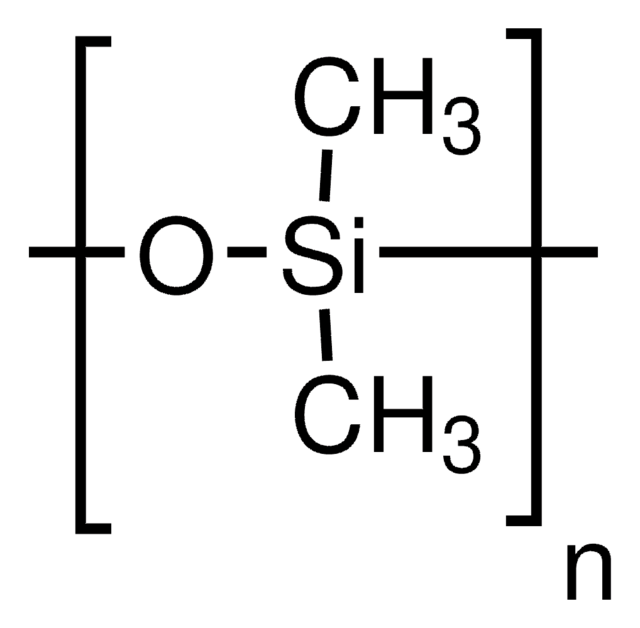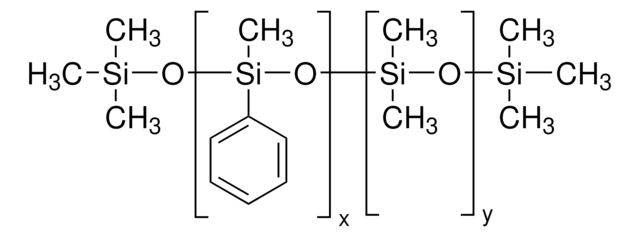146153
Silicone oil
for melting point and boiling point apparatuses
Sign Into View Organizational & Contract Pricing
All Photos(1)
About This Item
Linear Formula:
[-Si(CH3)2O-]n
CAS Number:
MDL number:
UNSPSC Code:
41100000
NACRES:
NB.77
Recommended Products
vapor density
>1 (vs air)
vapor pressure
<5 mmHg ( 25 °C)
5 mmHg ( 20 °C)
type
for melting point and boiling point apparatuses
parameter
−40-350 °F temp. range (−40-175 °C)
refractive index
n20/D 1.403 (lit.)
viscosity
45.0-55.0(25 °C)
bp
>140 °C/0.002 mmHg (lit.)
density
0.963 g/mL at 25 °C
Looking for similar products? Visit Product Comparison Guide
Application
Silicone oil has been used:
- for melting-point and boiling-point apparatus
- in membrane contactors to impregnate fibers
- on rheometer samples (chicken skin and bovine gelatin) to prevent evaporation during heating using temperature sweeps and frequency sweeps
Biochem/physiol Actions
Silicone oil is suitable for use in under-oil screenings of proteins.
Features and Benefits
- High viscosity
- Low water solubility
- Low vapor pressure
Storage Class Code
10 - Combustible liquids
WGK
WGK 1
Flash Point(F)
214.0 °F - closed cup
Flash Point(C)
101.1 °C - closed cup
Personal Protective Equipment
dust mask type N95 (US), Eyeshields, Gloves
Choose from one of the most recent versions:
Already Own This Product?
Find documentation for the products that you have recently purchased in the Document Library.
Customers Also Viewed
Sara Sanders et al.
PloS one, 13(5), e0197638-e0197638 (2018-05-18)
The in vivo microenvironment of bacterial pathogens is often characterized by nutrient limitation. Consequently, conventional rich in vitro culture conditions used widely to evaluate antibacterial agents are often poorly predictive of in vivo activity, especially for agents targeting metabolic pathways.
Tindaro Ioppolo et al.
Journal of visualized experiments : JoVE, (71)(71), e50199-e50199 (2013-02-15)
Optical modes of dielectric micro-cavities have received significant attention in recent years for their potential in a broad range of applications. The optical modes are frequently referred to as "whispering gallery modes" (WGM) or "morphology dependent resonances" (MDR) and exhibit
Benjamin R Schudel et al.
Lab on a chip, 13(5), 811-817 (2013-01-31)
RNA interference (RNAi) is a powerful tool for functional genomics with the capacity to comprehensively analyze host-pathogen interactions. High-throughput RNAi screening is used to systematically perturb cellular pathways and discover therapeutic targets, but the method can be tedious and requires
Ryan G Porter et al.
Otology & neurotology : official publication of the American Otological Society, American Neurotology Society [and] European Academy of Otology and Neurotology, 34(2), 304-310 (2013-02-28)
To describe a successful paradigm for the treatment of large acoustic neuromas (vestibular schwannomas). Retrospective case review. Tertiary referral center. The charts of 2,875 acoustic neuroma patients at Michigan Ear Institute were reviewed to identify 153 patients who underwent surgical
Zhentian Shi et al.
Journal of the Air & Waste Management Association (1995), 63(1), 80-86 (2013-03-02)
The use of surfactants during soil washing process can create massive foam, which has a negative impact on the effective use of equipment. A series of tests was conducted to evaluate the defoaming performance of three defoamers and to investigate
Our team of scientists has experience in all areas of research including Life Science, Material Science, Chemical Synthesis, Chromatography, Analytical and many others.
Contact Technical Service